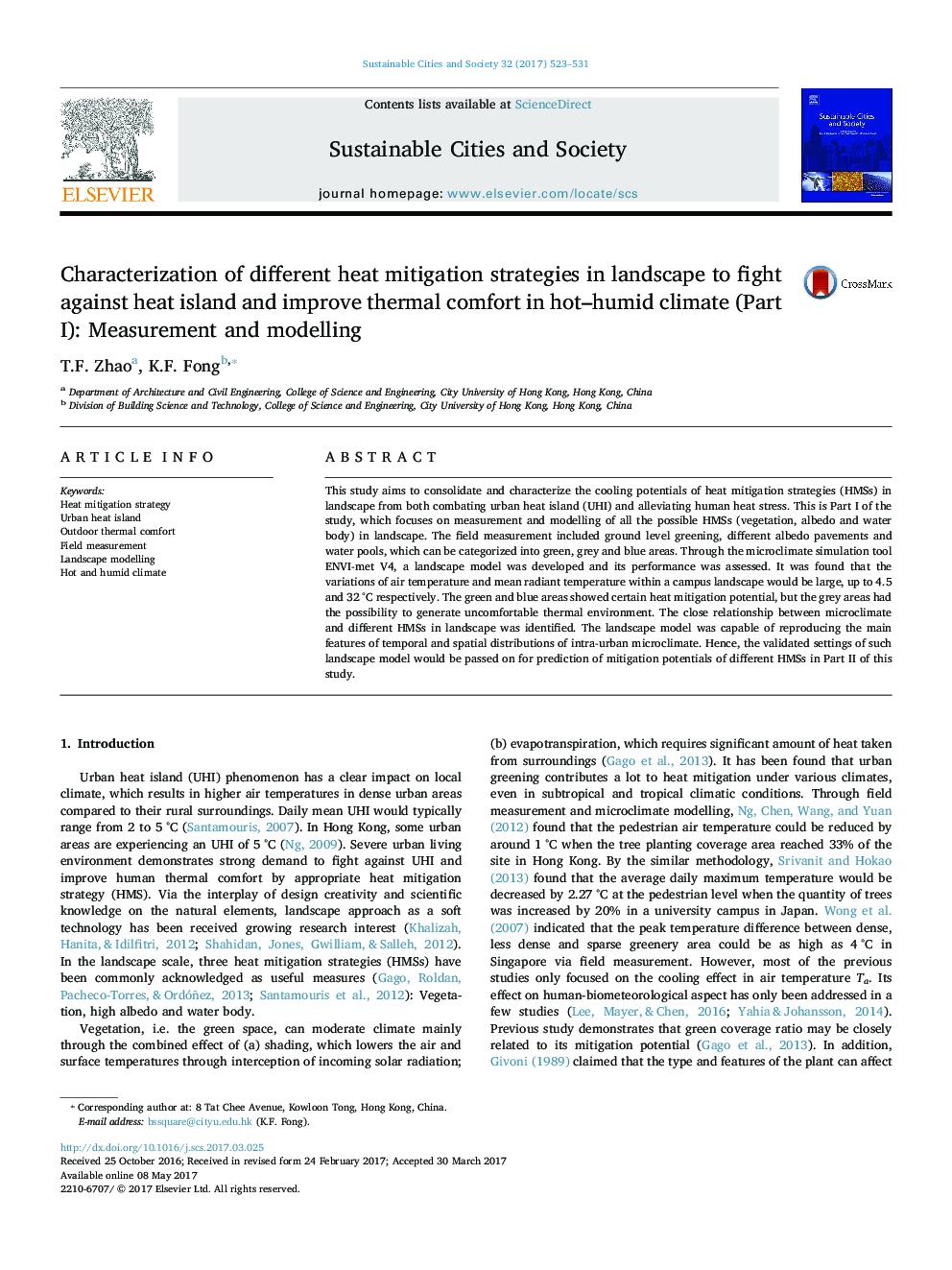| Article ID | Journal | Published Year | Pages | File Type |
|---|---|---|---|---|
| 4928030 | Sustainable Cities and Society | 2017 | 9 Pages |
Abstract
This study aims to consolidate and characterize the cooling potentials of heat mitigation strategies (HMSs) in landscape from both combating urban heat island (UHI) and alleviating human heat stress. This is Part I of the study, which focuses on measurement and modelling of all the possible HMSs (vegetation, albedo and water body) in landscape. The field measurement included ground level greening, different albedo pavements and water pools, which can be categorized into green, grey and blue areas. Through the microclimate simulation tool ENVI-met V4, a landscape model was developed and its performance was assessed. It was found that the variations of air temperature and mean radiant temperature within a campus landscape would be large, up to 4.5 and 32 °C respectively. The green and blue areas showed certain heat mitigation potential, but the grey areas had the possibility to generate uncomfortable thermal environment. The close relationship between microclimate and different HMSs in landscape was identified. The landscape model was capable of reproducing the main features of temporal and spatial distributions of intra-urban microclimate. Hence, the validated settings of such landscape model would be passed on for prediction of mitigation potentials of different HMSs in Part II of this study.
Keywords
Related Topics
Physical Sciences and Engineering
Energy
Renewable Energy, Sustainability and the Environment
Authors
T.F. Zhao, K.F. Fong,
